ROMAN VILLA OF TELLARO: A MISSED OCCASION?

Photo Source: Antonino Rampulla
I am a bit ashamed of it, but I admit that despite the
Villa Romana del Tellaro is just around the corner from Agri Camping Sophia, I visited it for the first time only in late summer 2017. The mosaics (bad) preserved would even have a higher artistic value than the already very important mosaics of the most noble Villa Romana del Casale in Piazza Armerina: why then is there, almost forgotten, with insufficient precautions for its preservation?

In late September, with the summer season in decline, I decide that it is finally time to get in the car to the Villa Romana del Tellaro. After about ten minutes, just before the bridge on the river Tellaro, I enter the road where the unequivocal road sign of my desired goal stands out. I slowly walk the road for about a kilometer, but I end up in the large parking lot of the one that after about ten minutes I discover being an educational farm. A gentleman informs me not to find me exactly in the Villa Romana del Tellaro and that to reach it I would have to go back about fifty meters and take a dirt road for another hundred meters. Thank you for the information and go back to the car, mulling between me and me on how I had escaped the sign of the entrance of the Villa ...
Finally arrived at the Villa Romana del Tellaro, I go to the entrance promptly pulling out the wallet to pay the entrance fee. Yes, I get a ticket but, to my amazement, for free:
admission to the Villa is therefore free, free, free.

Still disbelieving, I start looking lost in the meanders of the
eighteenth-century farmhouse built on the remains of the Villa, now restored and used as a museum, until I meet a volunteer, a fashion guy, who asks me if I would like it be guided in the visit. Obviously I accept (I would have left as a tip the money put into account for the ticket ...) So begins to explain the genesis of the Villa, enriching it with notions on the historical context that, given my university studies, in truth are a pleasant review. After being mutually sympathetic and having seen me sincerely interested, he begins to confide in me that in the green shed that you see during the journey, they are a bit secretly (and very slowly for lack of funds) digging and cleaning other mosaics, without making too much publicity for fear that some bad guy can "browse". At this point I ask him why the entrance was not paid: he replies that when it was paid they would receive not only theft but also very sad requests for
pizzo, then the Superintendent believed that the immediate entry was to eliminate paid entry. He explains that the same discovery of the Roman Villa of Tellaro was still linked to suspicious nocturnal activities and illegal excavations in the '70s: the underworld had begun to find and sell its archaeological finds on the black market. We pass in front of the mosaic depicting a complex hunting scene. He tells me that when the sirocco blows more than usual, some of the small pieces that compose it are detached and fly in the middle of the uncultivated weed. Unfortunately we are facing the umpteenth finding of the inability of the Sicily Region to preserve its archaeological treasures. And in this part of the island, unfortunately, negligence abounds.

In any case,
the Villa Romana del Tellaro is a structure of great historical value that is certainly worth a visit, built in the middle of the fourth century as a noble residence in an increasingly cosmopolitan empire, as evidenced by
the mosaics probably work by African artists, but politically more and more fragile. The construction of villas in the provinces of the empire in the late imperial era, which originates from the administrative decentralization desired by Diocletian at the end of the third century, is in fact the incipit of the encastellation process that was completed in the early Middle Ages. progressive emptying of cities in favor of fortifications in the countryside, less in sight and easier to protect. The Roman Villa of the Tellaro was also reachable by climbing the Tellaro river at the time navigable. As usual, on its ruins in the eighteenth century was built a farm:
is not unusual that posterity systematically have exploited the foundations of older structures to build buildings in turn functional to their needs of life . So it is not science fiction to hypothesize older Greek structures at the foundation of the Villa of Tellaro itself.
Only the central part of the Villa was found: there would still be so much to excavate and bring to light, but the chronic lack of funds and the fact that the foundations of the farm are entirely superimposed on the foundations of the Villa, they do not help to continue the work. It is highly probable that the construction of the farm has also produced substantial changes to the original layout of the Villa, as well as a
fire probably occurred in the fifth century that would have affected above all the integrity of the mosaics. The particular artistic and historical importance of the mosaics derives from the
refined polychrome used, from the attempt to graphically represent the movement and from the representation of scenes that allow to deepen some aspects of social life of the time. Emblem of the technical difficulty of the works of discovery is the mosaic of the
Weighing of the body of Ettore, partly destroyed by the laying of the foundations of the farm, partly recovered from their exportation.
Extremely interesting is the mosaic depicting a hunting scene, in which the figures are innovatively distributed in a not strictly linear way: the scenes are so distinguishable, but inserted in a unique context. The environment is probably African, given the presence of large cats, in particular a lion. Innovative elements, evident in the scene of the presumable ford of a swamp, are particular
traits in order to highlight the movement in water and the clever use of chiaroscuro to give depth to the scene , particularly evident in the swastikas around the mosaic.
The serious condition in which the mosaics were found at the discovery has forced the restorers to detach them from the original premises in order to better work in the laboratories of the Museum
Paolo Orsi of Syracuse. However commendable was the choice (also elicited by pressures from cultural associations and citizens) to bring them back to their original locations at the end of the
thirty years of restoration work, in order to improve their value. However
the current coverage to protect the mosaics is insufficient, so much so that recently it has even given birth to a little dog.
Conscious of such inadequacies, Dr. Corrado Bonfanti, as current mayor of Noto, would like to bypass the regional Superintendency to take care of it personally, entrusting the management of the structure to a start-up of young people with public tenders. However, between decrees, laws and bureaucracy, the situation is stalled.
Text Source: Antonino Rampulla
ARCHIVE NEWS
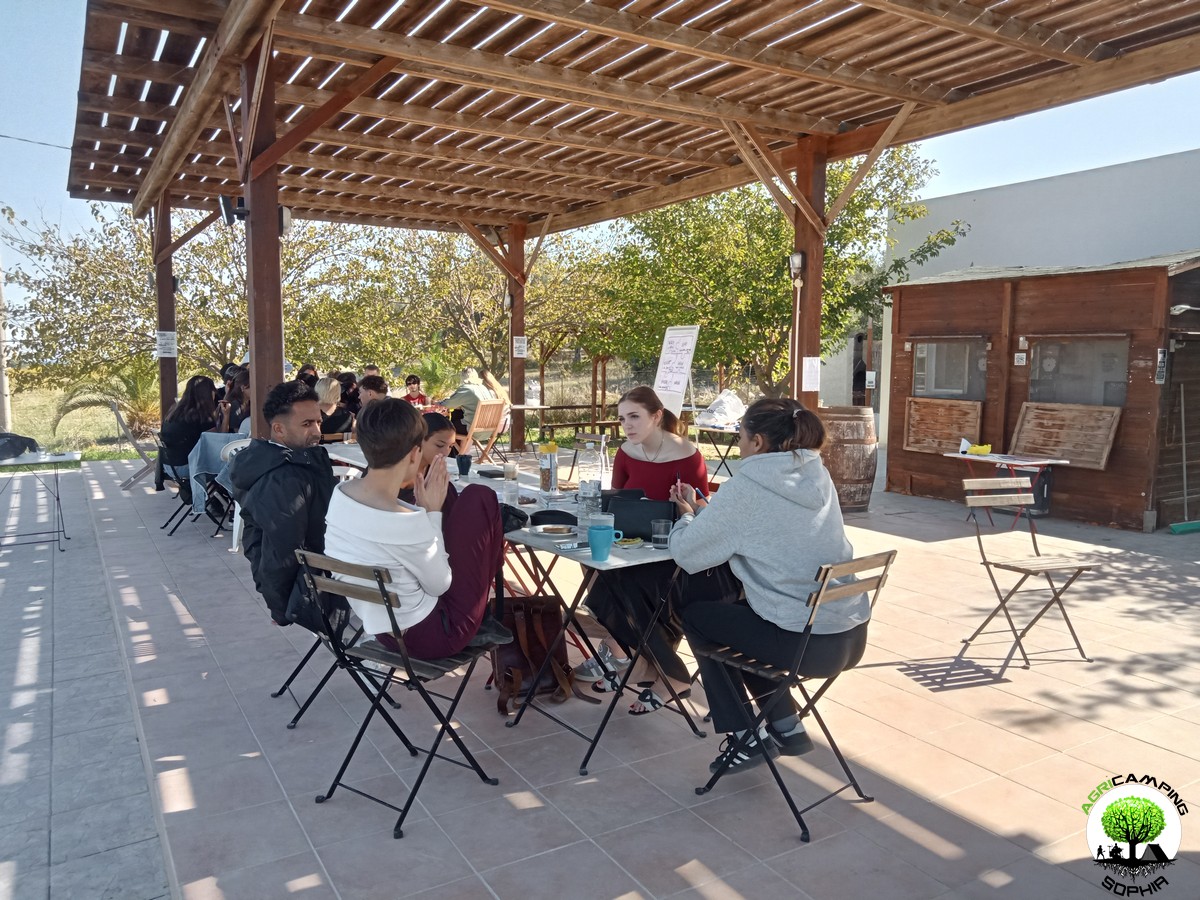 DO YOU WANT TO ORGANIZE AN ERASMUS AT AGRICAMPING SOPHIA?
DO YOU WANT TO ORGANIZE AN ERASMUS AT AGRICAMPING SOPHIA?
WHAT IS AGRICAMPING SOPHIA?
It is a campsite with tent pitches, glamping tents, mobile homes and bungalows
WHERE IS IT?
In Italy, in Sicily, near Syracuse, in Pachino: 36.736883, 15.095610
HOW TO CONTACT US?
info@agricampingsophia.it
(SPEAK ENGLISH) +39 3473079242 – (ONLY SPEAK ITALIAN) +39 3452396095
WHAT DO WE OFFER?
We offer hospitality and catering for Erasmus projects
FOR HOW MANY PEOPLE?
We can have 4-7 single beds in the Socrate Bungalow, 6-10 single beds in the Platone Mobile Homes, 4-6 single beds in the Aristotele Mobile Homes, 4 single beds in the Iblone Mobile Homes, 4 single beds in the single beds in the Empedocle Glamping Tents. In total we therefore have 18 comfortable single places or 31 single places with a fair spirit of adaptation.
IN WHICH PERIOD CAN AGRICAMPING SOPHIA BE AVAILABLE?
The most suitable periods to use our services...
 CART RUTS MODELED ON SOFT ROCK?
CART RUTS MODELED ON SOFT ROCK?
Read also RACK OR HOUSING FOR CLOGS?
Some cart ruts from the Targia district, in Syracuse, and most of the cart ruts from Granatari Vecchi, in Rosolini, give the impression of having been impressed, modelled, on a rock that was originally viscous, not entirely solid. As absurd as this hypothesis may seem, especially in Granatari Vecchi, the softness of the shapes and the at least anomalous uniformity of the rock bank, as if it were a concrete casting, which hosts the cart ruts, is unicum compared to the lithic context in the area.
In Targia this phenomenon is less impressive but if we consider the cart ruts essentially cart tracks, therefore furrowed roads indirectly resulting from the repeated passage of carts along the same route, we do not understand why such uniformity and smoothness is present, in the majority of cases, also on the parts not affected by the passage of the...
 RACK OR HOUSING FOR CLOGS?
RACK OR HOUSING FOR CLOGS?
Read also CART RUTS CUT FROM QUARRIES
In the presence of slopes, even slight ones, in some cart ruts in the Targia district, in Syracuse, central holes are found with a diameter of between 30 and 50 centimeters and a depth of 15-20 centimeters, spaced about 50 centimeters apart. Neither the position (they are not exactly in the center of the cart ruts and perfectly aligned with each other), nor the shape appear perfectly regular: either the passage of time and any wear have profoundly modified their original shape or, simply, they have never had a systematic regularity. However, the offset in position between one hole and another is never completely “off-axis”: there is always a portion about twenty centimeters wide that coincides with the same portion of the previous and subsequent hole. The best preserved and most defined holes are found in the cart ruts usually called Scala...
 CART RUTS CUT FROM QUARRIES
CART RUTS CUT FROM QUARRIES
Back to CART RUTS AND A FEW TOO MANY PROJECTIONS
I will skip any preamble, referring to what has already been written regarding the presence of cart ruts in south-eastern Sicily.
The easy academic tendency has been, in most cases concerning cart ruts, to consider them in terms of the latomie, or quarries, with which very often (for example in the cases of the Targia or Pizzuta districts) they share the same territory.
According to this theory, the carraie would have been indirectly created due to the wear of the rock at each passage of carts or sleds loaded with extracted stone blocks. I will not repeat the arguments presented so far in order to demonstrate that this is a theory that has little solid foundations on an in-depth analysis of the cart ruts. However, I will add a piece by demonstrating the implausibility of a connection between them in both chronological and functional...
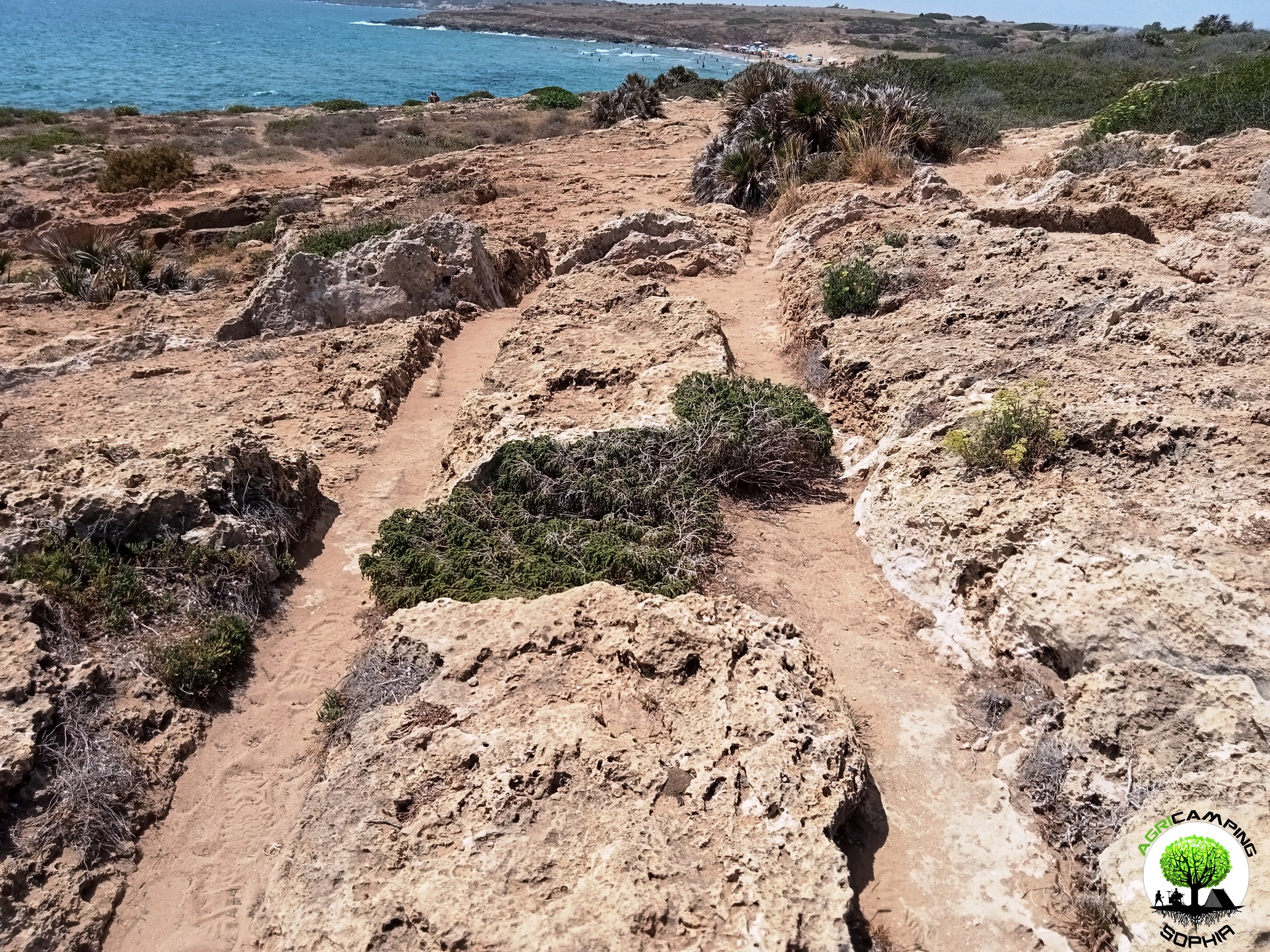 CART RUTS AND A FEW TOO MANY PROJECTIONS
CART RUTS AND A FEW TOO MANY PROJECTIONS
Read also THE POLISHING OF THE CART RUTS
I will skip any preamble, referring to to what has already been written regarding the presence of cart ruts in south-eastern Sicily.Considering the possibility that the cart ruts were gradually dug by the passage of carts pulled by pack animals, for example pairs of oxen, observing certain sections of the cart ruts present in the Granatari Vecchi district, in Rosolini, and in the Pizzuta district, close to the Vendicari Reserve, two questions arise:
1. Why force the animals to pass over rough surfaces and protrusions high, compared to the base of the furrows, even 60-70 centimeters?
2. Why, in the presence of such obstacles, not opt for a detour?
For Mottershead, Pearson and Schaefer such protrusions appeared later, since at the time of the passage of the wagons, a layer of earth covered the rocky bank, thus not making the obstacle...
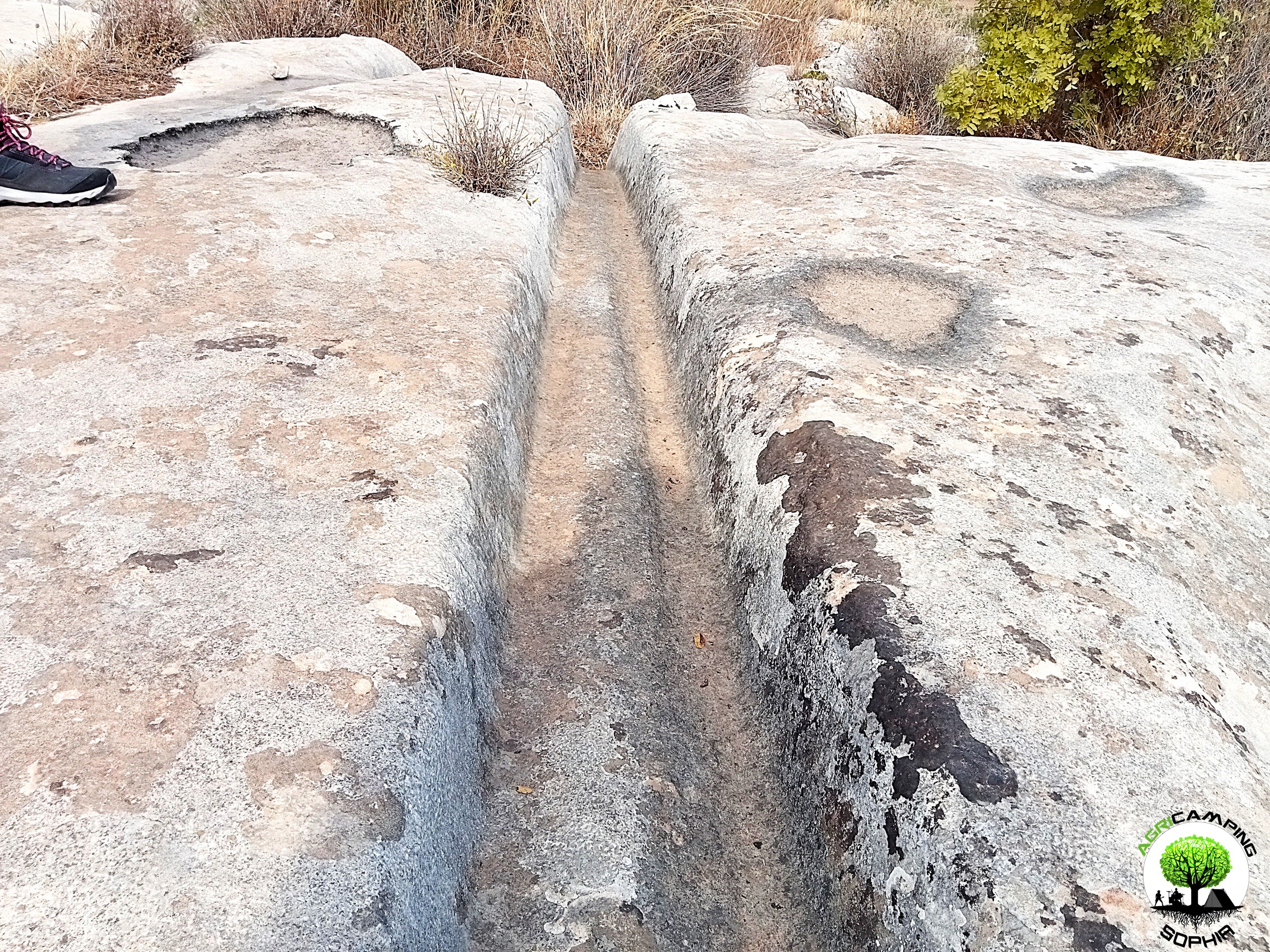 THE POLISHING OF THE CART RUTS
THE POLISHING OF THE CART RUTS
Read also THE PROBLEMATIC EDGES OF THE CART RUTS
I will skip any preamble, referring to to what has already been written regarding the presence of cart ruts in south-eastern Sicily.
To proceed with this comparison I have chosen a probable capital and the corner of a recess present in a block of the northern walls of Eloro that would seem to resemble a pinax, that is, a niche that would have housed a fresco of the heroa, but which a more careful observation refers to a system functional to the grip of the block through a pincer winch. Both elements, like the curt ruts, have remained at the mercy of the elements for millennia, and are therefore subject to comparable wear and tear due to the passage of time. The finishing of the capital should be of a high standard, since it is an architectural element that also has an aesthetic function. The recess, on the other hand, should have...
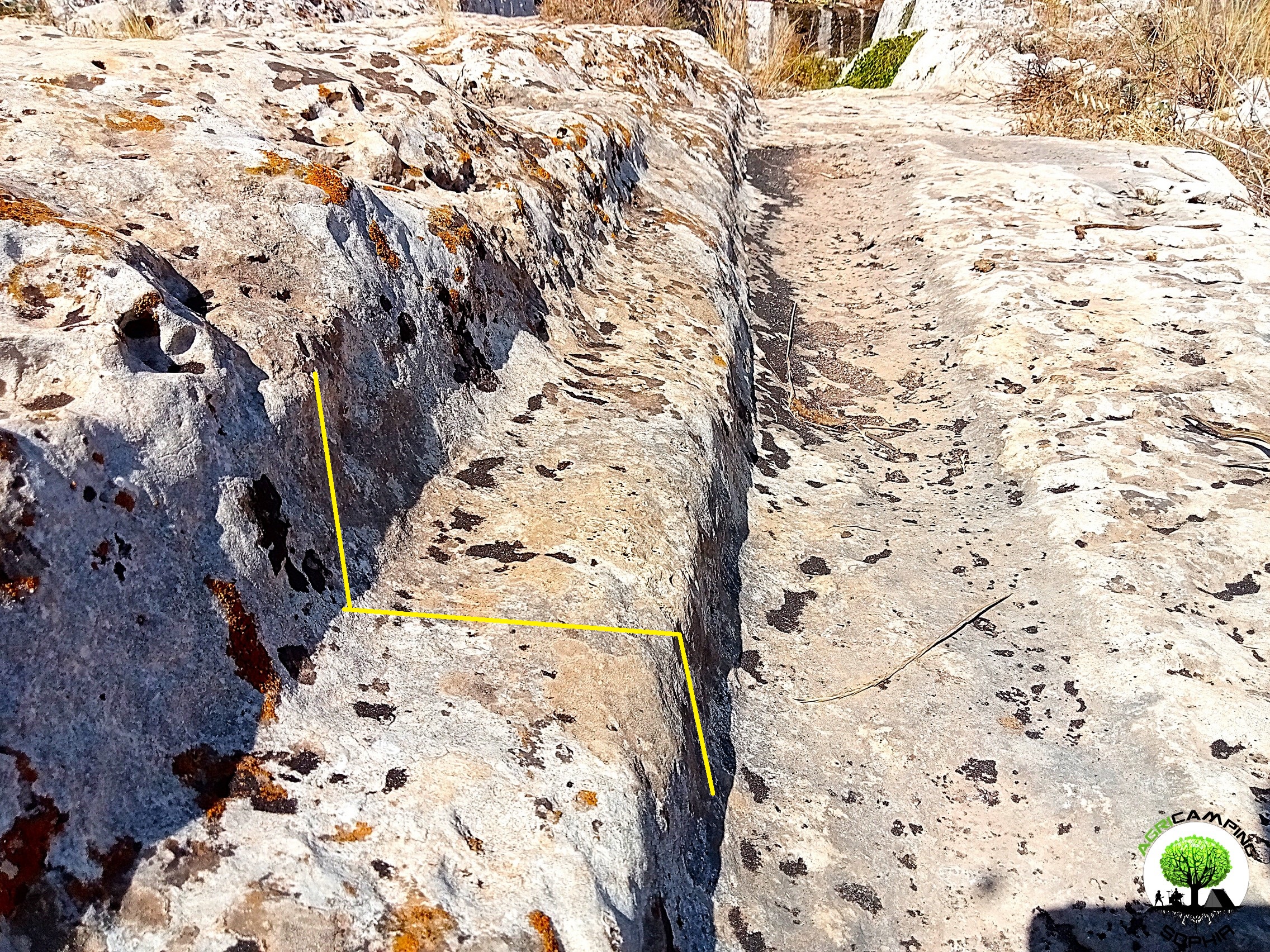 THE PROBLEMATIC EDGES OF THE CART RUTS
THE PROBLEMATIC EDGES OF THE CART RUTS
I will skip any preamble, referring to to what has already been written regarding the presence of cart ruts in south-eastern Sicily.As can be seen in other sites around the world, in some cart ruts I visited, in particular in the Cugni district in Pachino, in the Granati Vecchi district in Rosolini and in the Targia district in Syracuse, a clear border can be seen, a sort of frame, next to the grooves, more marked externally, barely noticeable internally.
The borders I measured have a width of 14-20 centimeters and a height of 8-10 centimeters.
Not all cart ruts have such frames present or particularly evident, regardless of the degree of wear or degradation. They are found above all in cart ruts with less deep grooves.
As already described in detail, given the presence of furrows with a depth of even 65-70 centimeters, the wheels of a possible vehicle would have had to have a...
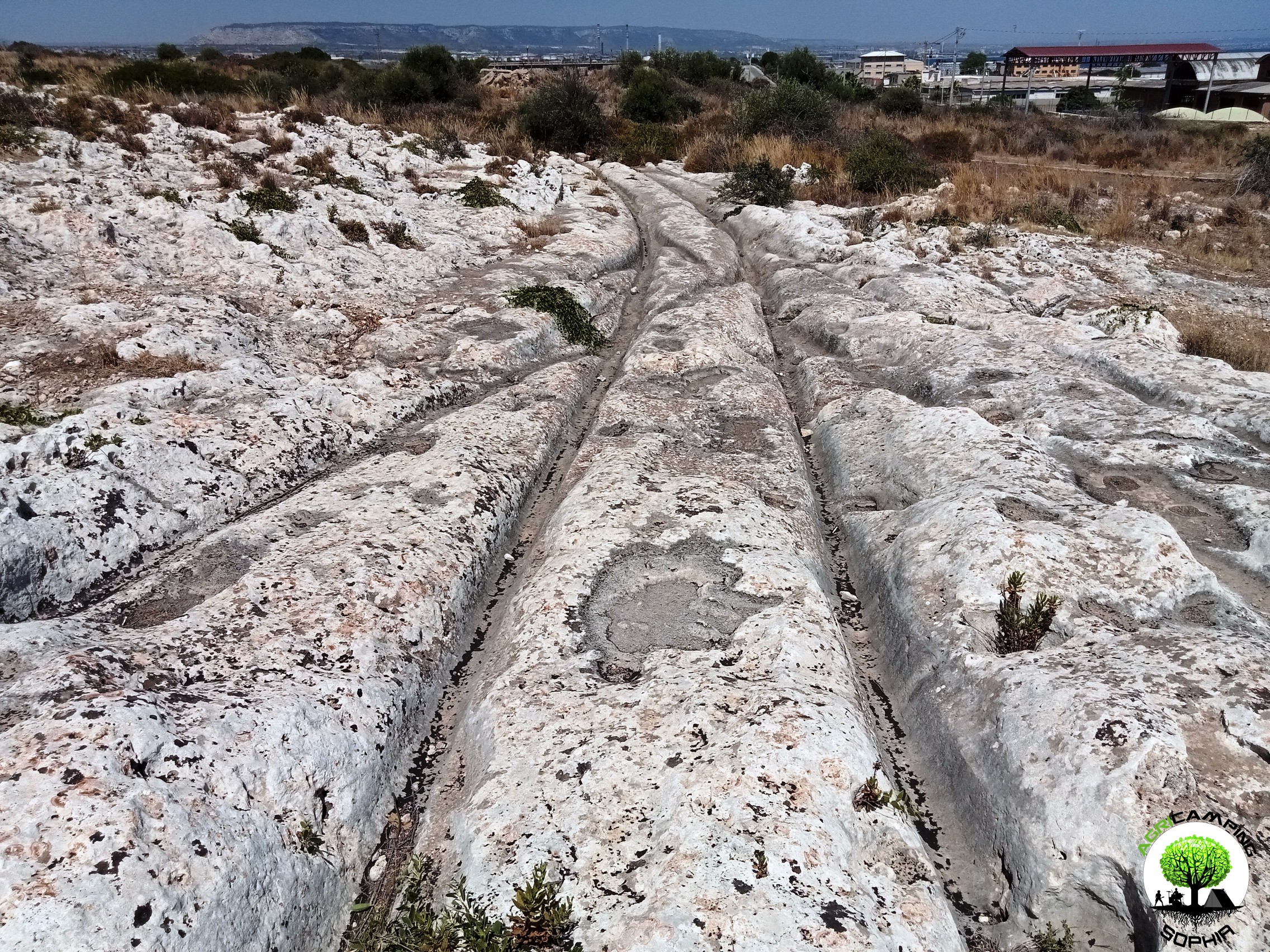 THE PROBLEM OF CART RUTS IN SOUTH-EASTERN SICILY (PART FOUR)
THE PROBLEM OF CART RUTS IN SOUTH-EASTERN SICILY (PART FOUR)
Click here to return to third part
Clapham Junction
As in the Maltese site Misrah Ghar Il-Kbir, also in the Targia and Granatari Vecchi districts the cart ruts intersect and cross each other in a similar way to the track switches in a railway station. The nickname Clapham Junction that was given by David H. Trump to the Maltese site, derives precisely from the similarity with the famous English railway station. For Sagona these are agricultural furrows and water channels, for Mottershead, Pearson and Schaefer these are abandoned paths due to obstacles and wear. Obviously we do not know what the morphology of the Syracuse and Rosolini territory was at times when the cart ruts were traced, but considering the current context, there certainly would have been no agricultural reason to build them, given the presence of fertile land, springs and fresh water courses just a few kilometers...






 DO YOU WANT TO ORGANIZE AN ERASMUS AT AGRICAMPING SOPHIA?
DO YOU WANT TO ORGANIZE AN ERASMUS AT AGRICAMPING SOPHIA? CART RUTS MODELED ON SOFT ROCK?
CART RUTS MODELED ON SOFT ROCK? RACK OR HOUSING FOR CLOGS?
RACK OR HOUSING FOR CLOGS? CART RUTS CUT FROM QUARRIES
CART RUTS CUT FROM QUARRIES CART RUTS AND A FEW TOO MANY PROJECTIONS
CART RUTS AND A FEW TOO MANY PROJECTIONS THE POLISHING OF THE CART RUTS
THE POLISHING OF THE CART RUTS THE PROBLEMATIC EDGES OF THE CART RUTS
THE PROBLEMATIC EDGES OF THE CART RUTS THE PROBLEM OF CART RUTS IN SOUTH-EASTERN SICILY (PART FOUR)
THE PROBLEM OF CART RUTS IN SOUTH-EASTERN SICILY (PART FOUR)